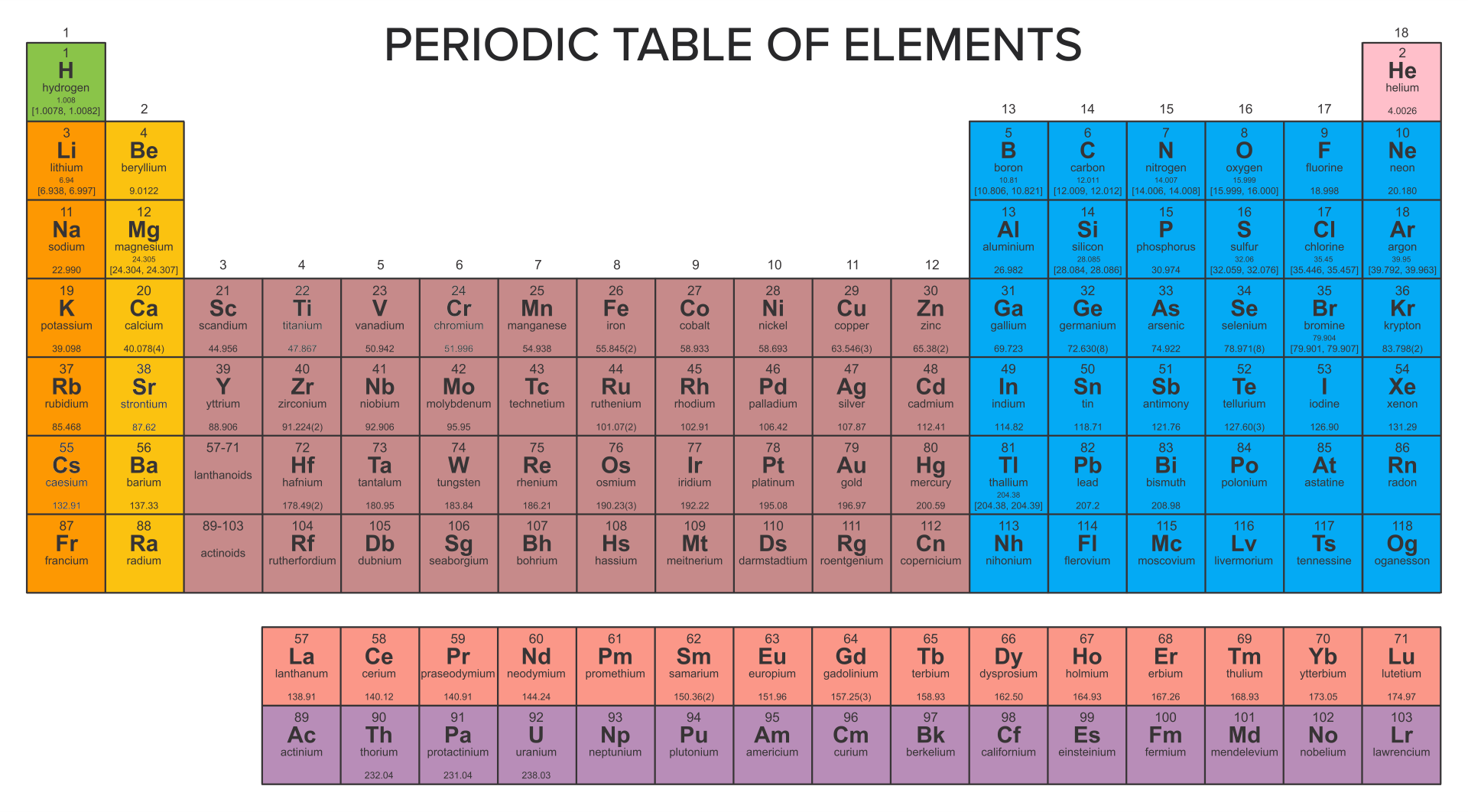

Because he was so impressed with how beautiful and varied these solutions were, the Swedish chemist Nils Sefström chose to name vanadium after Vanadís, an alternate name for the Norse goddess of beauty, Freya. One of the transition metals, pure vanadium is a harsh steel-grey color, but four of its oxidation states produce a rainbow of solutions, colored purple, green, blue, and yellow. A century before it became the name of element 15 in the late 1600s, Phosphorus was an alternative name for the planet Venus, whose appearance in the sky was once believed to strengthen the light and heat of the Sun. Phosphorus literally means “light-bearer” or “light-bringing,” as the first compound of the element glowed in the dark. Neon takes its name from neos, the Greek word for “new” (it was “newly” discovered in 1898). The name carbon comes from the Latin word carbo, meaning “coal” or “charcoal.” A small carbo, incidentally, was a carbunculus, which is the origin of carbuncle. LITHIUM (3)ĭespite being the least dense metal, lithium takes its name from the Greek word for “stone,” lithos, because it was discovered in a rock (as opposed to the other alkali metals potassium and sodium, which were discovered in plants and animals). The stories behind 20 other chemical element names are explained here. Whether these two petitions will come to fruition remains to be seen-the final names are not likely to be announced until later in the spring-but as IUPAC rules demand all new elements be named after either a mythological concept or character, a mineral, a place, a property of the element itself, or a scientist, it seems unlikely we’ll be seeing lemmium on the walls of chemistry classes any time soon.

Online, there’s growing support to name one of these new “heavy metal” elements lemmium in honor of Motörhead frontman Lemmy (who died two days before they were announced), and another octarine after the fictional “color of magic” in the late Sir Terry Pratchett’s Discworld novels (Pratchett died in March 2015). For the time being, they have the fairly clunky Latin and Greek numerical names ununtium (Uut), ununpentium (Uup), ununseptium (Uus), and ununoctium (Uuo), but, by IUPAC rules, their discovers now get the chance to officially name them. On December 30, 2015, the International Union of Pure and Applied Chemistry announced the discovery of four new chemical elements-numbers 113, 115, 117, and 118-the first new elements added to the periodic table since 2011.


 0 kommentar(er)
0 kommentar(er)
